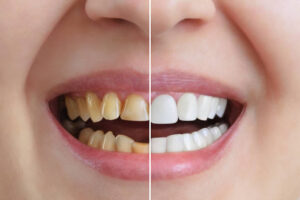As an adult, you may be quick to assume that orthodontic care is only for kids and teenagers. While early intervention is always better, it is never too late to meet an orthodontist and discuss your concerns. Below, we have enlisted top signs that you must schedule an appointment with an Irving orthodontist.
- You have an overbite/underbite: If you have an overbite or underbite, there is a high chance of damaging the enamel of your teeth. Orthodontic care can help fix these concerns. The good news is you don’t always have to go for metal braces, which are unsightly and often uncomfortable. Your dentist may consider options like Invisalign after a detailed exam.
- You have an open bite: An open bite is when the teeth on the top and bottom don’t touch. It can be a serious concern as you cannot always chew or enjoy the foods you like. There are orthodontic treatments for open bites that you can consider after talking to an orthodontist.
- You have jaw pain: If there is an orthodontic issue, you may have a hard time with jaw pain, even though there may not be visible signs. See an orthodontist if your pain or discomfort in the jaw is getting worse with time, and they can find the underlying cause.
- You have speech concerns: Although more common in kids than adults, speech issues could be related to an orthodontic concern. If you cannot speak specific words or have trouble opening your mouth, check with an orthodontist to know more.
- You have crowded teeth: If you have crowded teeth, it could be a matter of cosmetic concern. However, crowded teeth also pose additional problems, including the inability to keep up with oral hygiene habits. When you cannot floss or brush normally, it can cause tooth decay and gum disease.
- You have gapped teeth: Another big reason to see an orthodontist is gapped teeth. These gaps could make it hard for you to smile normally, and orthodontic treatments can help fix the gaps and align your teeth. Gaps between teeth could also lead to gum inflammation and possible plaque formation.
Orthodontic care has evolved significantly in the last couple of decades, and adults have as many treatment options. Regardless of age, do not shy away from addressing malocclusion and related issues. Your orthodontist is the best person to advise you on what may work best for your symptoms and concerns.









